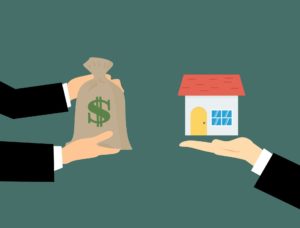If you’ve got your finger on the economic pulse, particularly as it relates to the housing market, you’ve undoubtedly noticed that interest rates are on the rise.
Why? Well, unemployment sits at a low 3.7% (as of October 2018, according to the Bureau of Labor Statistics most recent report) which often comes with higher wages, which leads to inflation, which yields an upward trend in mortgage rates.
The graph below illustrates that correlation pretty well: As unemployment jumped in 2008 and 2009 (the top line), wages dropped significantly (bottom line), followed by a subtle yet steady increase in wages as unemployment slowly falls again.
The Impact on Real Estate
Anyone who pays attention to these types of statistics will gladly give you their opinion on the health and stability of today’s real estate market. And while we’re about to join that club, we don’t suggest that you take our words as gospel. That said, we do believe that the housing market is still incredibly stable and is poised to continue to see continued growth moving forward, particularly in Richmond. Here’s why:
Rising interest rates are caused by and coupled with increased employment, so the increased cost of borrowing is unlikely to cause a collapse. As demonstrated by the low unemployment rate, the public as a whole is seeing their income increase, and provided mortgage credit standards remain consistent (the lack of which was arguably the biggest cause of the 2008 fiasco), these changes are all normal and healthy developments that ebb and flow over time.
 Particularly in Richmond, home values are continuing to rise, making real estate an investment that is likely to produce returns that compensate for higher rates. With houses selling as quickly as they have been, pricing continues to trend upward. This is especially exaggerated in urban markets, where low inventory can’t be easily compensated for by increased building (you can’t build where there aren’t empty lots!). The suburban markets are seeing these trends as well, though pricing is slowly starting to plateau as builders add to the inventory stock.
Particularly in Richmond, home values are continuing to rise, making real estate an investment that is likely to produce returns that compensate for higher rates. With houses selling as quickly as they have been, pricing continues to trend upward. This is especially exaggerated in urban markets, where low inventory can’t be easily compensated for by increased building (you can’t build where there aren’t empty lots!). The suburban markets are seeing these trends as well, though pricing is slowly starting to plateau as builders add to the inventory stock.
We may see a shift in mortgage product trends, as buyers try to protect themselves from what might be even higher rates down the line. The 3, 5, and 7 year Adjustable Rate Mortgages provide buyers with options a percentage point or two below fixed or long term rates, which helps offset the potential risk of rising rates in the short to mid term. However, with so many questions about rate trajectory – How high will they go? When does it stop? Will they come back down in 5 years? 10? – it’s even more important to discuss your options with a trusted mortgage professional before locking anything in.
Summary
All this said, we see moderately increased rates as a reflection of a strong economy and a booming real estate market. And while low rates were fun while they lasted (that 30 year fixed mortgage at 3.5% was a no brainer), mildly costlier borrowing is ultimately a small price to pay for a healthy, stable market whose upward equity potential is likely to benefit the savvy, informed shopper.
As the saying goes: “A rising tide lifts all boats.”


Leave a Reply